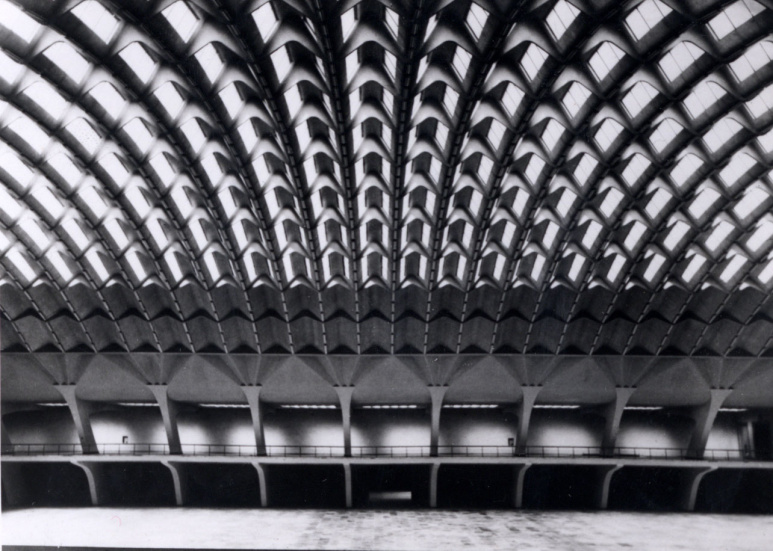History

The engineer Pier Luigi Nervi (Sondrio, 21 June 1891 – Roma, 9 January 1979) was one of the world’s leading exponents of structural architecture. His work was vital to presenting the world with an image of a modern and competitive Italy that was both creative and technologically advanced. In the vein of classical architects, Nervi was both a designer and a builder. He was known primarily for his use of reinforced concrete and his skill for verifying design intuitions using scale models; he was also a genius at exploiting the compositional freedoms afforded by the use of prefabricated elements.
Constantly attentive toward the relationship between structure and form, working with the concept of ‘resistance by form’, every part of his structures was rigorously based on the internal forces it was subjected to, clearly manifesting its role in the overall design. Nervi also focused on economic issues, which he considered an opportunity for adopting ever more innovative technologies and highly specialised labour, despite the presence of only a few rudimental materials and resources.
Pier Luigi Nervi was one of the leading figures of the post-war Italian economic miracle. From this period onward he designed and built some of the most extraordinary industrial and civil buildings (the Turin Exhibition, the Pirelli Skyscraper in Milan with Gio Ponti, the Papal Audience Hall at Vatican City) and exhibition and sports facilities, in particular for the 1960 Rome Olympics.
In this pages the figure of Pier Luigi Nervi and his relationship with the city of Torino and the construction of the Torino Esposizioni halls are discussed and analyzed.
